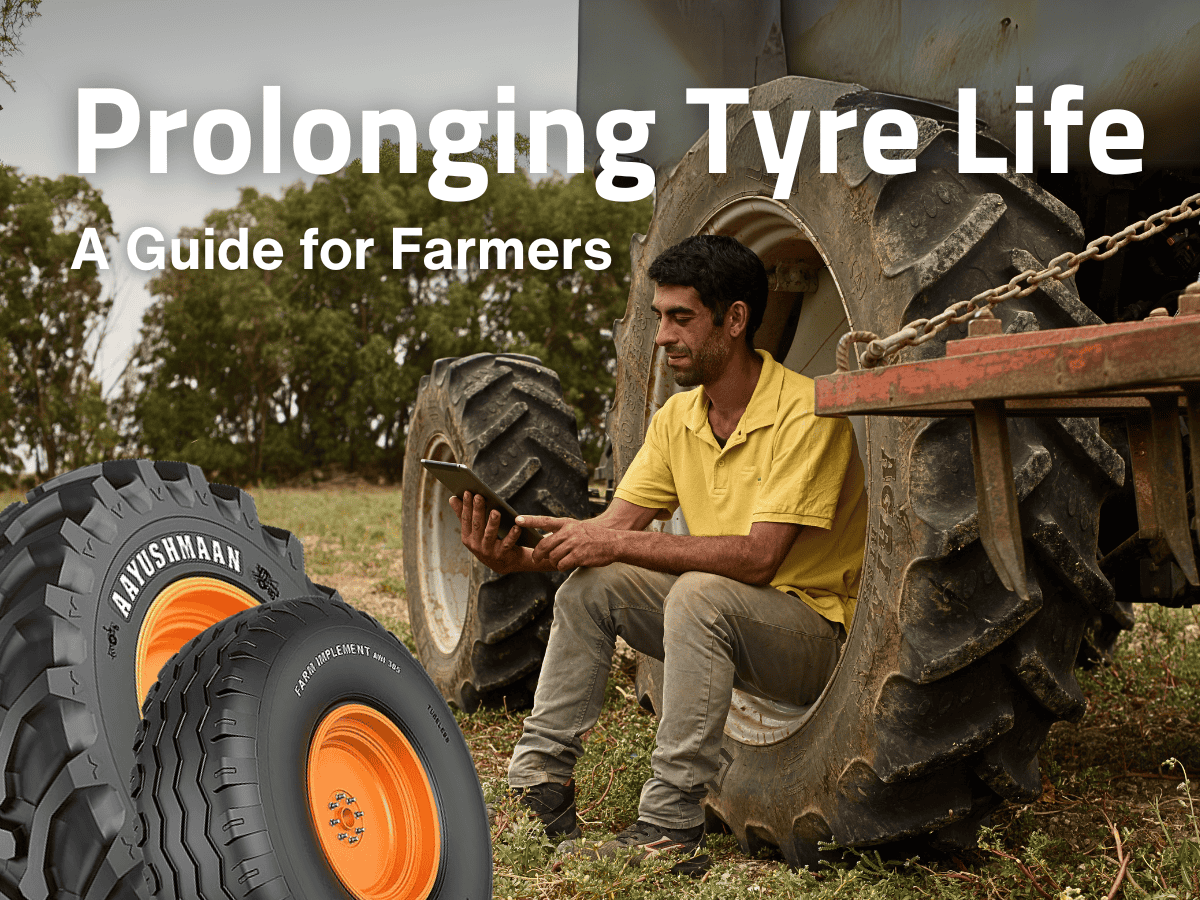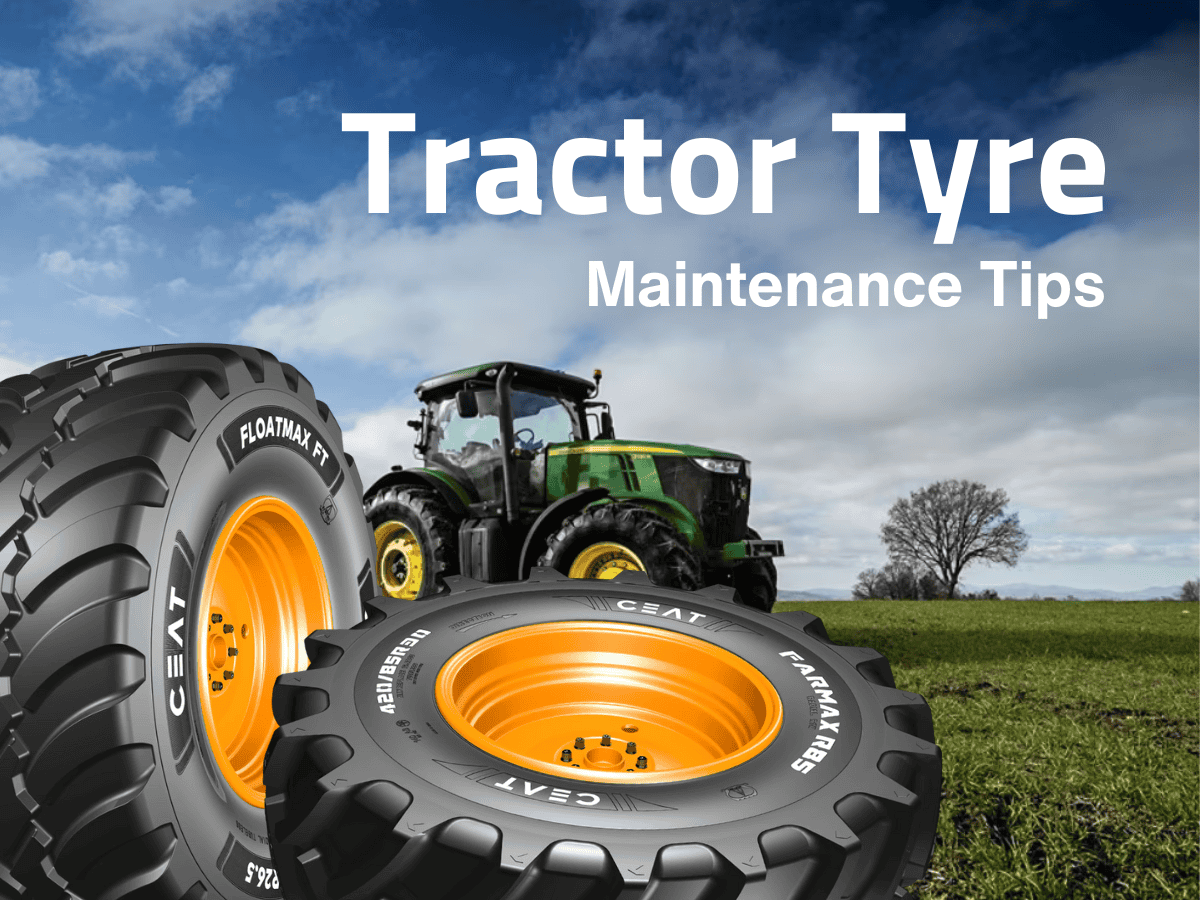ceat-speciality:blogs-tags/all,ceat-speciality:blogs-tags/tyre-care
How can I achieve optimal performance from my agricultural tyre?
Thu, 23 Mar 2023 | PRODUCTS
Agricultural tyres are one of the most critical components of farming equipment, yet they are often overlooked. They can have a significant impact on the yield and efficiency of agricultural operations.
To achieve optimal performance from your agriculture tyre, follow these tips:
Choose the Right Tractor Tyre
Choosing the right tyre for your farming equipment is crucial. Different agricultural activities require different types of tyres. So, select tyres specifically designed for your intended use. CEAT Specialty offers a wide range of farm tractor tyres designed to handle a variety of terrains and weather conditions.
Maintain Proper Farm Tyre Pressure
Proper tyre pressure ensures optimal performance from your agricultural tyres. Overinflated or underinflated tyres can cause uneven wear and tear, reducing the lifespan of your tyres and impacting their performance.
Check Ag Tyre Tread Regularly
The tread on your tyres is critical in providing traction and grip on various surfaces. Check the tread depth regularly to ensure your tyres are not worn out and provide adequate grip.
Rotate Your Farm Tractor Tyres
Rotating your tyres regularly can help to ensure even wear and tear and extend the lifespan of your tyres. This is especially important for front tyres, which wear out faster than rear tyres due to their extra weight.
Store Your Farm Tractor Tyres Properly
Proper storage of your Agri tyre can help to prevent damage and extend their lifespan. It is essential to store your tyres in a cool, dry place away from direct sunlight and moisture.
Manage Wheel Slip
Managing wheel slip is crucial for maximizing the performance of farm tractor tyres, especially in primary or secondary cultivations where the conversion of power to grip is critical. Excessive wheel slip leads to fuel wastage, accelerated tractor tyre wear, soil damage through compaction and smearing, and lower work rates. However, controlled wheel slip is necessary for optimal performance from the tyres and tractors they are attached to.
As the lugs of tractor tyres grip the ground through the force transmitted from the tractor’s transmission to the wheel, they compress the soil until they encounter sufficient resistance to propel the tractor forward. This compression varies based on soil type, condition, composition, and moisture content. An ideal wheel slip range is 12-15%, which can be at the higher end of this bracket in loose/cultivated or wet soil. If soil moisture is an issue, it’s best to halt work until conditions improve. If the soil structure is the problem, consolidating the ground with a front-mounted press after making a second pass on cultivated soil could be a viable option.
If your tractor does not have a wheel slip management system, measuring a set distance in the field and counting the revolutions of the tyre made over this distance while the tractor is at work can help assess slip levels. Calculate the total distance covered by the circumference of the agriculture tyre revolutions and compare it against the measured distance worked to determine the slip percentage.
Numerous contemporary tractors are furnished with wheel slip monitors that utilize radar to gauge the distance traveled by tractor and contrast it with the revolutions of the wheels or tyres. If your tractor is equipped with wheel slip monitoring, set it to the most effective amount of wheel slip that suits the task at hand and the existing soil conditions.
Follow Working Tips
As you gear up your tractor and tyres for work, keep in mind some tips to ensure optimal performance. Use your tractor’s wheel slip monitor for primary or secondary tillage tasks to maintain slip in the ideal range, typically between 12-15%. This allows for slight slippage that aids in transferring tractive force from the tyres while protecting the topsoil.
When driving on the road, ensure smooth acceleration and braking to maximize the wear life of your tractor tyre. Additionally, when driving on tarmac or concrete surfaces, minimizing tight turns can help reduce scrubbing and prolong the life of the tyres.
By following these tips, you can ensure your agricultural tyres are in optimal condition and perform at their best, providing better traction, fuel efficiency, and yield for your farming operations. Contact CEAT Specialty to find the perfect agricultural tyres for your needs.



























































































































